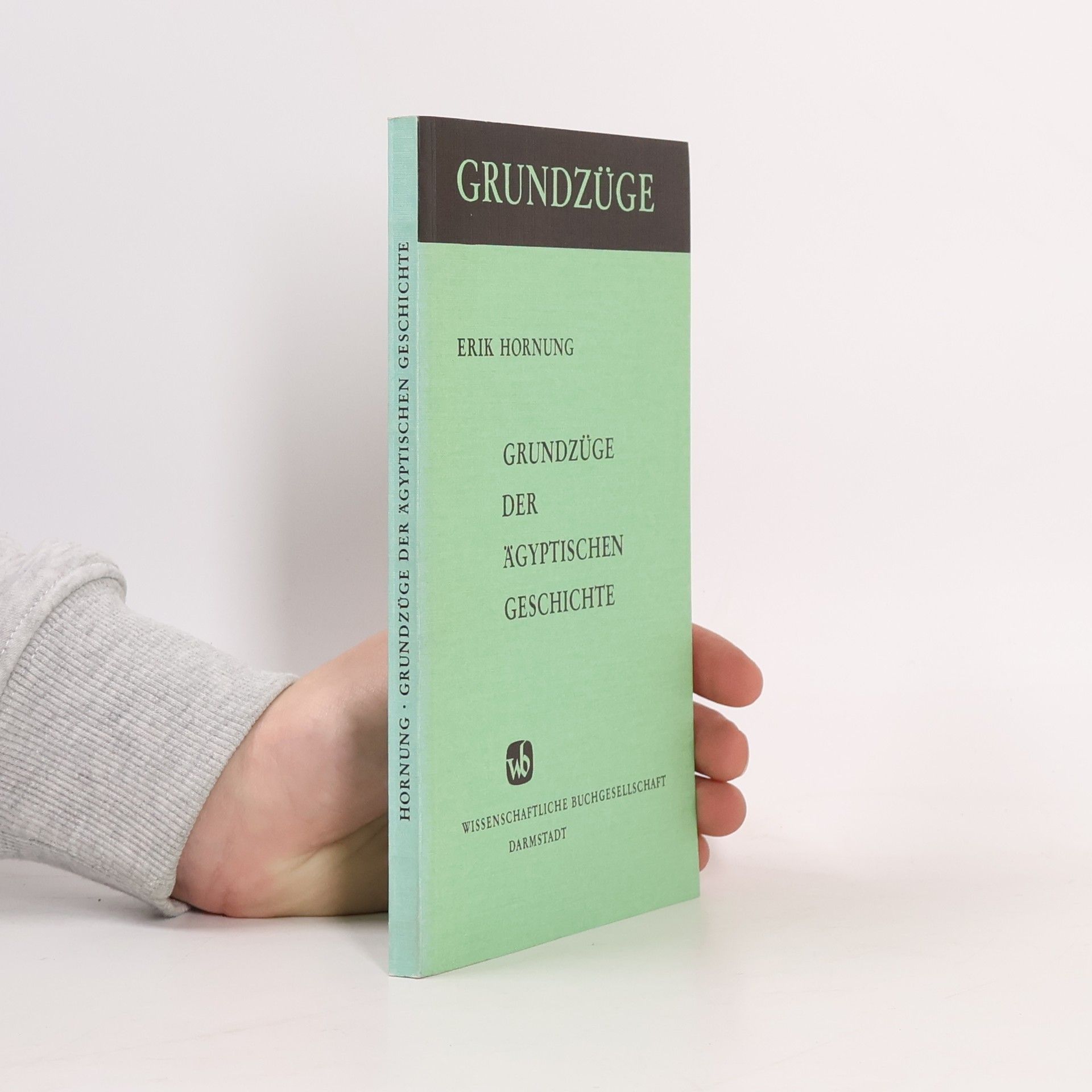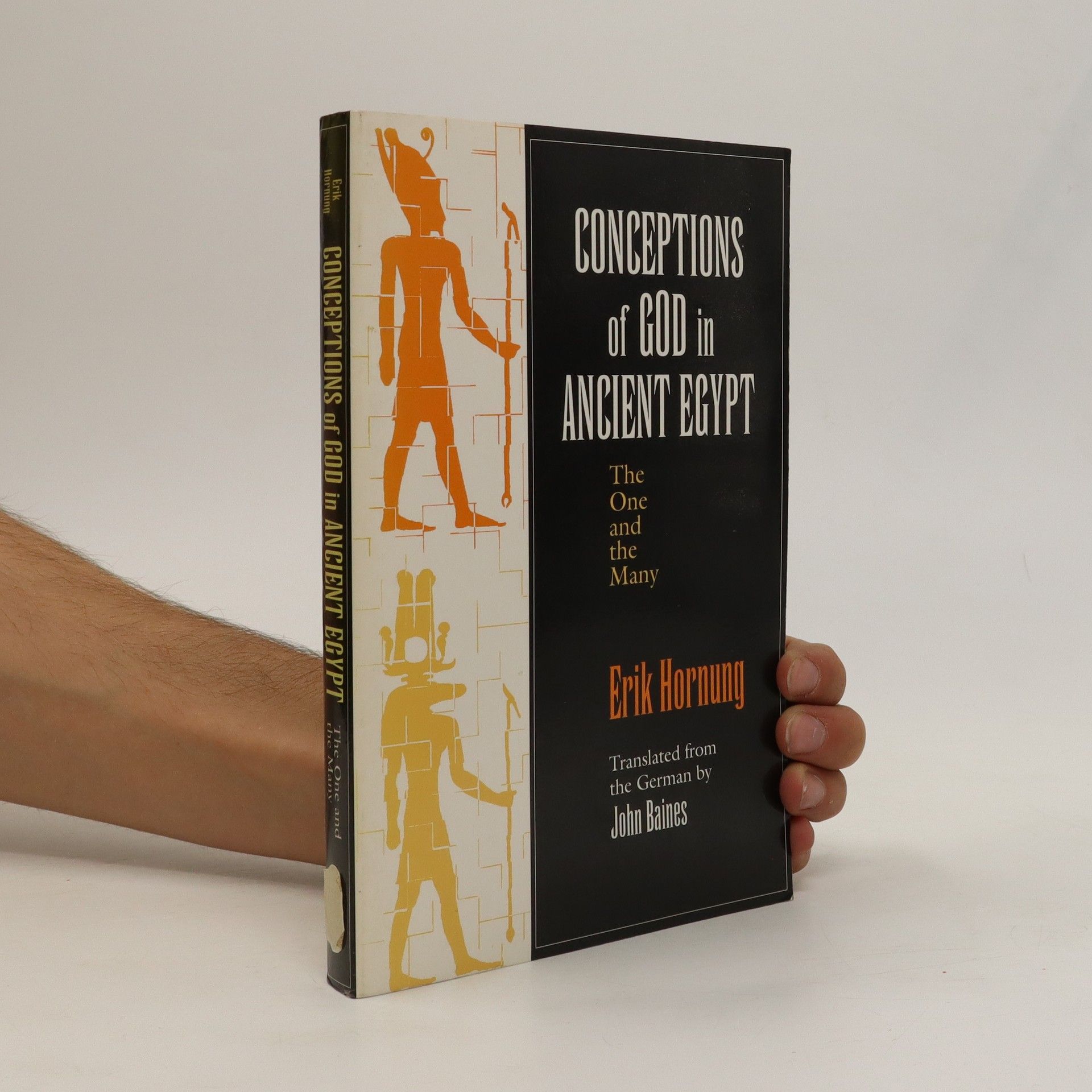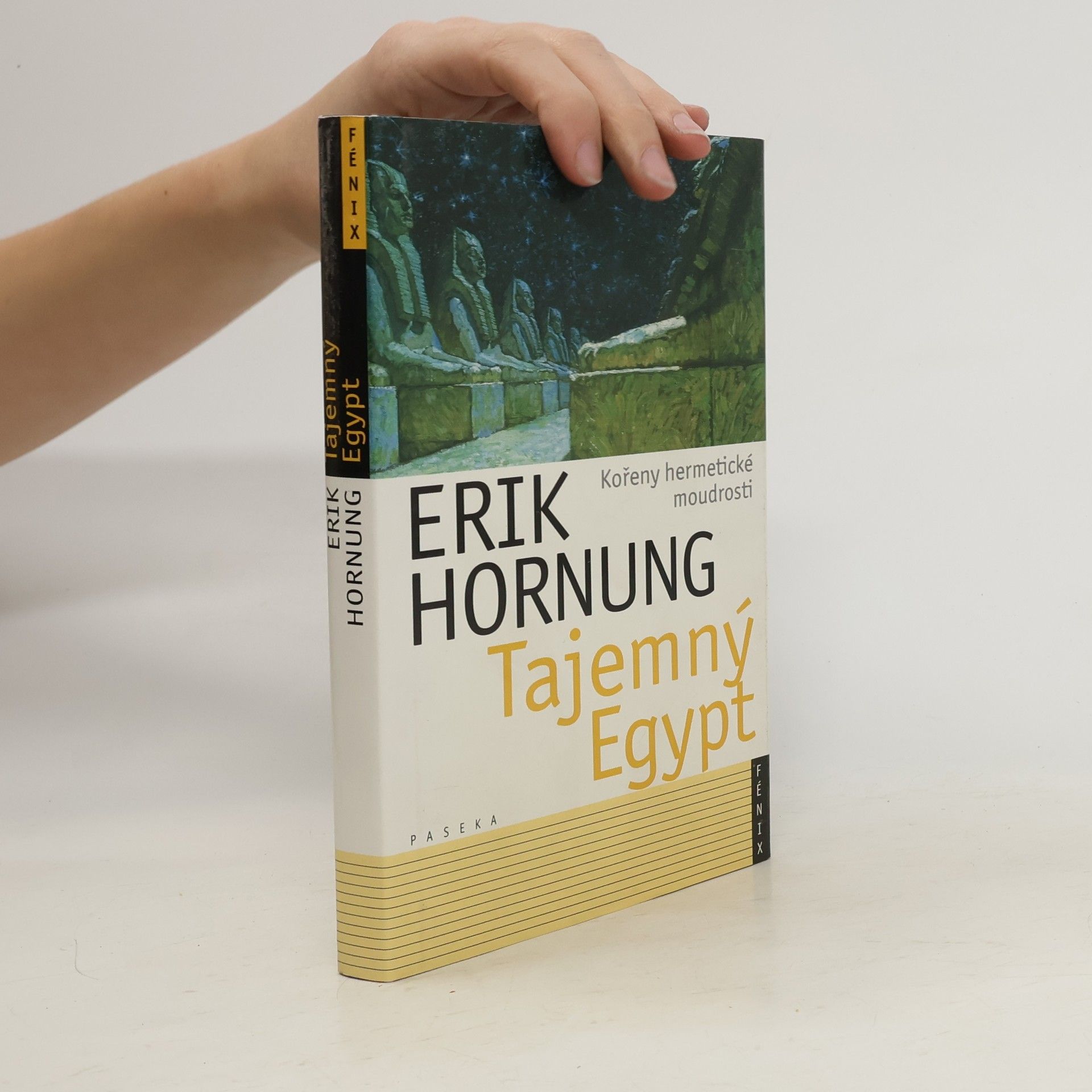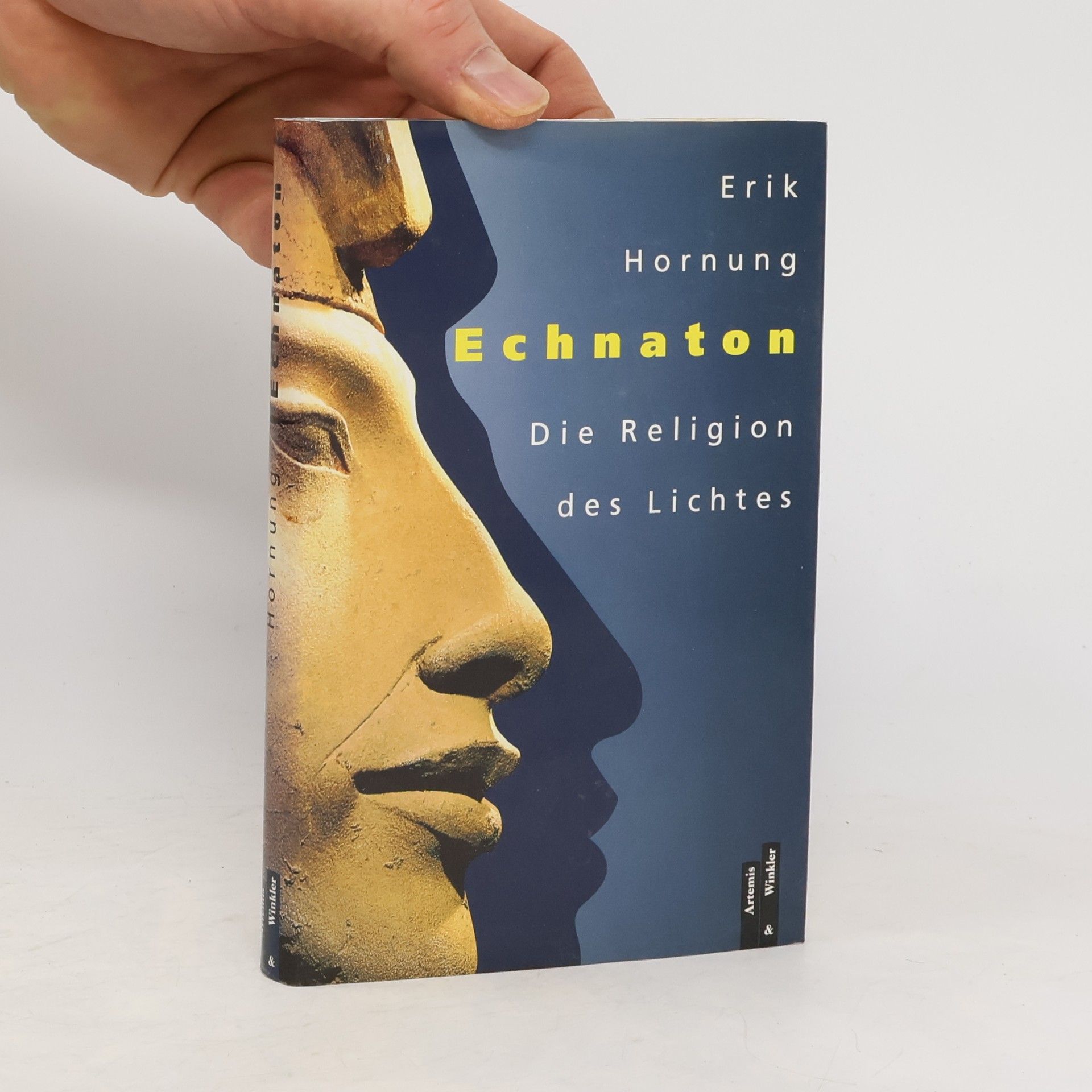Přes sílící proud vědeckých informací o starém Egyptě přetrvává představa Egypta jako tajuplné země. Egypt stále přitahuje mnohé, pro něž jsou výsledky vědeckého bádání až příliš racionální. Jeden z největších soudobých znalců staroegyptského náboženství, jazyka a kultury se v této knize zabývá právě tímto "druhým Egyptem" – staroegyptskými kořeny astrologie, alchymie, ale také hermetismu a gnosticismu, rozšířením kultů božstev Isidy a Osirida, vlivem staroegyptských náboženských představ na křesťanství, renesanční učence, rosekruciány, svobodné zednáře a další tajné společnosti.
Erik Hornung Knihy
Tento autor se ponořil do hlubin staroegyptské pohřební literatury a údolí králů, aby odhalil klíčové aspekty starověké víry. Jeho přístup zdůrazňuje, že k pochopení komplexních myšlenkových pochodů je zapotřebí mnohostranný pohled, nikoli jediná metoda. Prostřednictvím svého nejznámějšího díla zkoumá vzájemný vztah mezi jednotou a rozmanitostí v egyptských představách o božstvu, čímž se stal předním odborníkem na tuto literaturu. Jeho práce, často překládané do angličtiny, vyzývají čtenáře, aby přistupovali k historii a víře s vážností a otevřeností k různým interpretacím.







The quest for immortality
- 288 stránek
- 11 hodin čtení
Ancient Egyptian antiquities are dominated by art and artifacts depicting the Netherworld, the alternate universe which mummified bodies would enter at the end of their physical lives, where they would live on for eternity. In this dazzling book, photographs and exhaustive texts illustrate the promise of a glorious rebirth pervaded the daily life of Egyptians, from commoners to the most powerful pharaohs.
Conceptions of God in Ancient Egypt
- 296 stránek
- 11 hodin čtení
Osiris, Horus, Isis, Thoth, Anubis—these captivating figures of the Egyptian pantheon have long intrigued scholars and enthusiasts alike. In this comprehensive study, renowned Egyptologist Erik Hornung delves into the ancient Egyptians' understanding of their gods, drawing from a meticulous reappraisal of primary sources. This work, now available in English for the first time, represents the most thorough exploration of Egyptian religion to date. Hornung investigates the characteristics, roles, and significance of the gods and goddesses, while also analyzing the evolving iconography that depicts them. He addresses the complex and often contradictory elements of their faith, seeking to answer two fundamental questions: How did the Egyptians perceive their deities? Did they believe in an impersonal force behind their diverse pantheon? Throughout the text, Hornung captures the intricate and rich tapestry of ancient Egyptian religion and worldview, which stands in stark contrast to contemporary perspectives. This distinguished work will resonate with anyone fascinated by ancient Egypt, religion, and the history of belief systems, as well as students and scholars in fields such as history, anthropology, and archaeology. Translated by John Baines and enhanced for an English-speaking audience, this edition includes a new preface by the author.
In doppelter Hinsicht haben die Pharaonen des Neuen Reiches (1540- 1070 v. Chr.) in ihren Gräbern Schätze aufgehäuft: in Form kostbarer Beigaben, wie man sie aus dem Grabschatz des Tutanchamun kennt, und in Form von Wandbildern, die einen tiefen Einblick in die altägyptische Schau des Jenseits geben, dem die Toten angehören. Der Reichtum an Details, der hier ausgebreitet wird, ist nie wieder erreicht worden und macht das Tal der Könige zu einer unerschöpflichen Quelle für den ägyptischen Totenglauben und zu einer der kultur- und geistesgeschichtlich wichtigsten Stätten. Der Band versucht, ein Gesamtbild dieser faszinierenden Welt der Gräber und der religiösen Texte zu vermitteln. Er trägt die Informationen zusammen, die man in Reiseführern und in den Erklärungen der Dragomane vergeblich sucht.
Echnaton
- 159 stránek
- 6 hodin čtení
Das geheime Wissen der Ägypter und sein Einfluß auf das Abendland
- 232 stránek
- 9 hodin čtení
Das Ägyptenbild des gesamten Abendlandes ist bis heute meist esoterisch geprägt. Erik Hornung legt die Wurzeln der esoterischen Verklärung Ägyptens offen. Astrologie, Alchemie und andere Geheimwissenschaften, Rosenkreuzer, Freimaurer, Theosophen sowie heutige esoterische Bewegungen – der Hunger nach verborgenem Wissen und nach tiefer liegenden Zusammenhängen hat ein antikes, weitgehend imaginäres Ägyptenbild bis in die modernsten esoterischen Strömungen hinein lebendig erhalten. Von diesem Bild, das mit der geschichtlichen Wirklichkeit nur in losem Zusammenhang steht und ein Ägypten zeigt, das als tiefste Quelle allen Geheimwissens gilt, hatte sich die universitäre Disziplin der Ägyptologie, die 1822 mit der Entschlüsselung der Hieroglyphen durch Jean-François Champollion erblühte, strikt abgesetzt. Nun spürt der international renommierte Ägyptologe Erik Hornung dieser seit der Renaissance nahezu ungebrochenen Anziehungskraft auf die europäische Geistesgeschichte nach.
Das Totenbuch der Ägypter
- 543 stránek
- 20 hodin čtení
Mehr als jedes Volk haben sich die alten Ägypter mit den Geheimnissen von Tod und Jenseits beschäftigt. Als ein Ergebnis dieser Bemühung, über die Grenzen des Lebens hinauszudenken, liegen die Sprüche des Totenbuches vor uns, die man seit dem Neuen Reich (1550 - 1070 v. Chr.) den Verstorbenen in das Grab mitgab. Nichts Menschliches ist diesen Texten fremd - neben der Angst vor Gefahren und den elementaren Wünschen nach Brot und Bier, nach Luft und Licht stehen kühne Visionen der Überwindung von Raum und Zeit, des Eintritts in die Welt der Götter. Dort herrscht Osiris, der beispielhaft alle Schrecken des Todes überwunden hat. Sein Reich, wohin uns das Totenbuch führt, ist fremd und vertraut zugleich, denn der Weg zu den Toten geht durch letzte, an keine Zeit gebundene Tiefen der menschlichen Seele.
Die ewigen Fragen im Lichte ägyptischer Weisheit • Die Essenz ägyptischen Geistes in einem Band mit Zeittafel und Register • Erik Hornung ist einer der bedeutendsten Ägyptologen unserer Zeit Die alten Ägypter haben als erste die Erfahrung gemacht, dass der Mensch der Welt nicht ausgeliefert ist, sondern sie denkend deuten und gestalten kann. Schon im 3. Jahrtausend v. Chr. waren sie mit Fragen beschäftigt, die seitdem nie mehr verstummt sind: nach der Entstehung der Welt, nach Sein und Nichtsein und der Bedeutung des Todes für unser Leben, nach dem Wesen des Göttlichen, dem Sinn der Geschichte und der Basis menschlichen Zusammenlebens. Für die Antike war Ägypten ein Tempel der Weisheit, seine Priester die Hüter ewig gültiger Wahrheiten.



